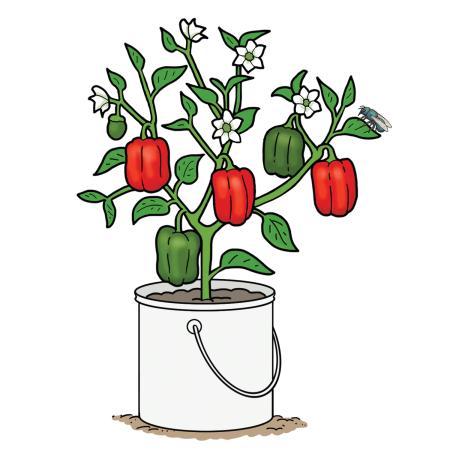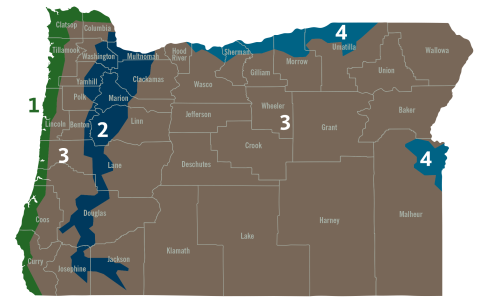
- Continue to monitor your plants. Add compost or fertilizer if they show signs of yellowing or wilting.
- After you harvest, begin seeding cover crops like vetch, rye, and clover. Cover crops strengthen your soil.
- Plant cool-season veggies, like kale and beets, for a fall harvest.
- Monitor tomatoes for blossom-end rot. Consistent watering is key!
- When harvesting veggies, wash and dry them before storing.
- Did you know certain veggies should not go in the refrigerator? Tomatoes, cucumbers, and peppers do best on the counter! Learn more about how to store vegetables at FoodHero.org.
Kids Can!
Show kids the many pollinators that visit the garden! Are there fuzzy bumblebees on your sunflowers? Metallic green bees? How many can you find?
Where is your garden?
Oregon has four growing regions. Choose vegetable varieties and planting dates suitable to the growing conditions in your area:

- Oregon coast: cool, long season of 190 to 250 days.
- Western valleys: 150 to 250 day season; warm days, cool nights; length of season varies year to year.
- High elevations: short growing season of 90 to 120 days; frost can occur during any month.
- Columbia and Snake River valleys: 120 to 200-day season; hot days, warm nights; length of season fairly well defined.


